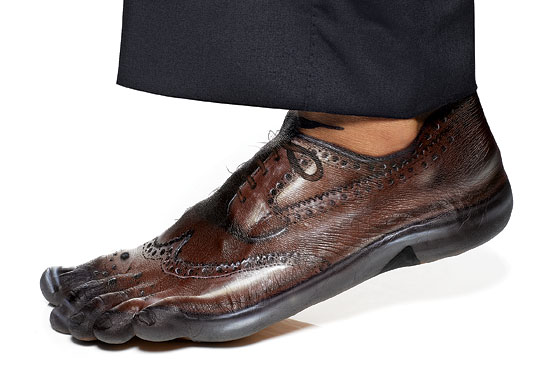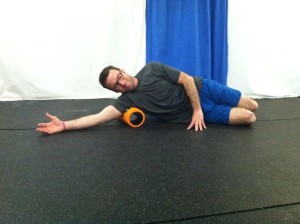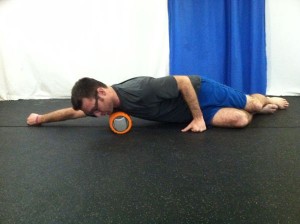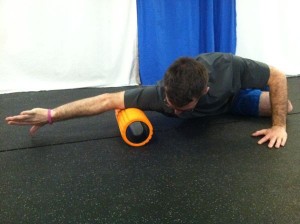As a deep tissue massage therapist, fitness coach, and barefoot running coach, I have treated a number of very common running injuries, such asplantar fasciitis, shin splints, and IT band pain. Over the years, I have noticed that the majority of clients suffering from these injuries were not runners. They were walkers.
This brought up a question: if the combination of running in shoes with a heel strike leads to dysfunctional gait patterns — and ultimately chronic pain and injury— what does it do when walking, such as speed walking or walking with a purpose?
During this time, I began exploring barefoot/minimalist running. As an experienced fitness coach, I knew that if I wanted to transition to minimalist running, I should not attempt to do so overnight. If I attempted to do too much too fast, before my body was conditioned for the task, I would be setting myself up for injury. Seems like a simple concept to grasp, but I, like so many other people, had a tendency to learn the hard way — but that is a topic for another blog.
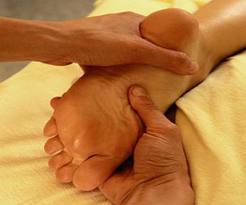 The combination of my personal experimentation in running and what I was feeling during my deep tissue massage sessions brought about a realization: The musculature of the arches and calves has been weakened from years of wearing shoes. For just about anybody, the idea of running on weak unstable feet would spell disaster. In order to build up strength in the arches and calves, you literally have to relearn to walk before you can relearn to run. This changed my focus from being primarily on running gait mechanics to both running and walking gait mechanics and brought me to develop a theory.
The combination of my personal experimentation in running and what I was feeling during my deep tissue massage sessions brought about a realization: The musculature of the arches and calves has been weakened from years of wearing shoes. For just about anybody, the idea of running on weak unstable feet would spell disaster. In order to build up strength in the arches and calves, you literally have to relearn to walk before you can relearn to run. This changed my focus from being primarily on running gait mechanics to both running and walking gait mechanics and brought me to develop a theory.
I believe that our bodies are designed to have nearly identical walking and running gait patterns. If you were to engineer a mechanical structure to move at varying speeds, would you design it to perform two completely different movement patterns? Wouldn’t it be simpler and more beneficial to design the structure to perform a single movement pattern that can be maintained through variations in speed? Transitioning from running with a forefoot strike to walking with a heel strike is a major shift in movement patterns, balance and stabilization, and impact loads through the skeletal system.
My theory is that the proper form for both walking and running indicates four things: a forward lean of the body, a forefoot or mid-foot strike which lands directly beneath the body’s center of gravity, short stride length, and fast cadence. There are areas of obvious difference between the two activities, such as length of stride, the actual speed of cadence (number of foot strikes per minute — around 180 steps per minute for running), and how intense the impact forces are at footfall and lift off.
This is a theory that goes against much of today’s popular wisdom. Most of the articles on barefoot or minimalist running suggest that our natural barefoot running gait should be a forefoot or mid-foot strike, but that our walking gait should be a heel strike. This does not make much sense to me. Current research is showing the positive benefits of barefoot running with forefoot or mid-foot strike. It seems to me that walking with a forefoot or mid-foot strike would result in the same benefits since it is utilizing the exact same architecture.
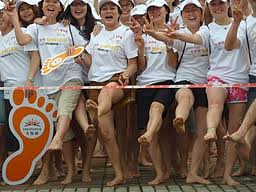 When I perform deep tissue massageon both runners and walkers with painful injuries, I can feel how impact forces move throughout the fascial tissue of their body causing dysfunction. I feel adhesions and a buildup of tissue from repetitive trauma around the heel, achilles tendon, and calf; around the inside and outside of the knee from excessive inward and outward rotation of the knee; at the head of the femur (thigh bone)and the front and back of the pelvis; and around the shoulders, neck and head. This tissue tends to be intensely painful to the touch and has a direct relationship to the pain or injury for which the client sought treatment — and to their walking and/or running mechanics.
When I perform deep tissue massageon both runners and walkers with painful injuries, I can feel how impact forces move throughout the fascial tissue of their body causing dysfunction. I feel adhesions and a buildup of tissue from repetitive trauma around the heel, achilles tendon, and calf; around the inside and outside of the knee from excessive inward and outward rotation of the knee; at the head of the femur (thigh bone)and the front and back of the pelvis; and around the shoulders, neck and head. This tissue tends to be intensely painful to the touch and has a direct relationship to the pain or injury for which the client sought treatment — and to their walking and/or running mechanics.
Walking and running with heel strike has an impact force that is greater than body weight and creates the same rotational forces at the foot, knee, and hip, all of which I discussed in last week’s blog.
If both walkers and runners are suffering from the same injuries, then wouldn’t the same remedy for one work for the other?
The arches of the foot are designed to absorb impact. They do this equally well for walking as they do for running — when they are fully engaged. The heel of the foot does not absorb impact any better for walking than it does for running. Over miles of repetition, the heel strike of a walker will develop the same fascial tissue dysfunctions as that of a runner. This is why so many of the “running injuries” I treat are with non-runners.
